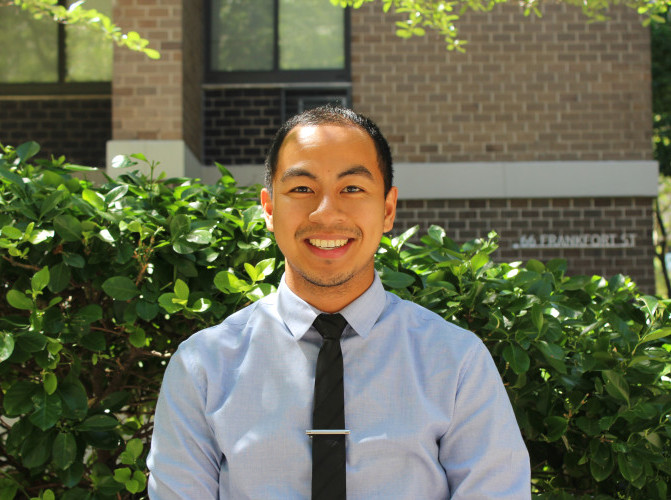Environmental Education Coordinator: Arturo Romua

Arturo Romua has taught thousands of students in New York City about the Freshkills Park project through presentations, workshops, and walking tours. He came to Freshkills Park through New York City’s Parks Fellowship & Conservation Corps, a 40-week public service commitment in which individuals were assigned to divisions throughout the agency to help protect and enhance New York City’s parks and natural resources.
What is your name and title?
My name is Arturo Romua, and I have been the Environmental Education Coordinator at Freshkills Park since September 2015.
What are you working on?
Generally, I instruct K-12 students on topics that are pertinent to the conversion of Freshkills Park from the world’s former largest landfill into a sustainable, urban park. Through classroom presentations, walking tours and public library workshops, I have enhanced public transparency in the fields of landfill engineering, waste management, green initiatives, urban ecology, and much more. Additionally, I assist with the development and expansion of youth environmental education programs, lesson plans and evaluation rubrics.
What drew you to Freshkills Park?
I went to school for Marine and Environmental Biology and Policy (MEBP) at Monmouth University. Upon graduation, I worked in an environmental engineering/consulting firm to investigate and remediate petroleum contamination in the mediums of soil, groundwater and air. It was in this natural direction that led me to being a part of Freshkills Park’s landfill-to-park development as an educator.
Learning about the history of Freshkills Park for the first time provided ample invitation to explore even more. It is a remarkable feature converting what once was the world’s largest landfill into a cultural and sustainable destination over the next 20 to 25 years. Freshkills Park is an ever-changing landscape, influenced by decisions of various stakeholders. Being an immediate part of this transformative movement is not only a privilege, but more importantly a directive to inspire others to become environmental stewards in the broadest definition.
What’s your favorite topic surrounding Freshkills Park and why?
I am a proponent of the ambitious waste management protocol New York City is implementing over the next few years. The initiative is called 0x30, and it aims to send zero waste into landfills by the year 2030 by increasing organics collection, textile recycling and electronic waste programs.
Landfills commonly suggests a cradle-to-grave design, in which generation eventually leads to disposal. I believe in the promise of waste diversion via composting, where waste of one process is essentially food for another. With composting, food scraps and yard waste decompose overtime with the aid of micro- and macroorganisms to create a nutrient-rich soil amendment. Composting (at an individual, community and/or city capacity) is another category of recycling that should be practiced in addition to reducing and reusing.
Freshkills Park is a fortunate result of environmental degradation via human consumerism. There seems to always be an irrational need to have something new, something better and something different. We need to change that ill perspective and be intelligent consumers instead, being mindful of carbon footprint and limited resource extraction. The notion of “less is more” and “quality over quantity” should be considered.
As we move forward, we need to collectively realize that it is our responsibility to educate others on ways to conserve and preserve our environment for generations to come. Knowledge is certainly power, and I am glad I get to share my personal passion and quest for environmental appreciation and protection with NYC’s youth and their adult counterparts.
Favorite color?
Color is very expressive so instead of an effortless and straightforward answer, my approach will be poetic in nature. My favorite color is blue because it is reminiscent of water. Water speaks a universal language, as it is a driving force for all lifeforms on Earth. It allows seeds to escape the confines of their protective coverings, breaking through the soil’s surface and embracing the sunlight above. It grants fish and other marine species the ability to swim and migrate from one location to the next, welcoming even rough currents in order to pursue their nutritional and reproductive needs. The color blue is synonymous to life’s adamance and persistence. Life is about being able to tackle any form of adversity and to move forward in the process. Blue is a very powerful color as it reminds me to always be accepting, adaptable, appreciative. I challenge you to find your inner blue.




